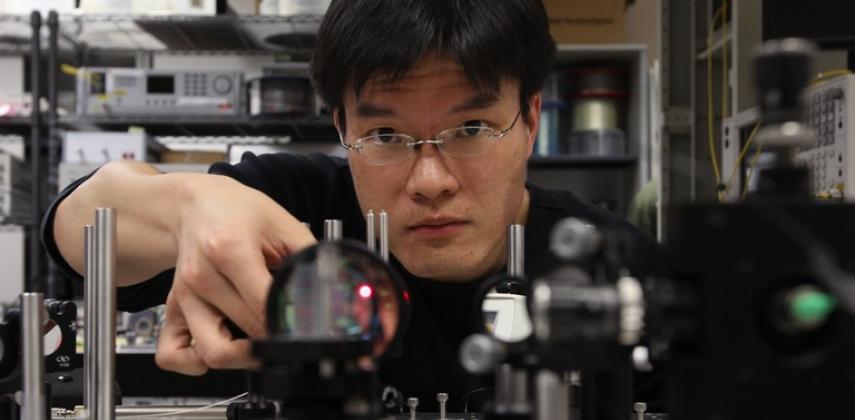When choosing fibre optic communications for a final-year BSc project at the University of Queensland in Australia, Kenneth Wong hardly expected where that decision would lead. But as his fascination with light and its applications in evolving technology grew, he saw that breakthroughs in the field could change everyday lives.
Going to Stanford University in 1997 for a master’s and then a PhD put Wong on the cutting edge and gave him the opportunity to gain practical experience as a research engineer with Hewlett-Packard, a multinational information technology (IT) company.
Wong is now an associate professor in the department of electrical and electronic engineering at the University of Hong Kong. He received the university's Outstanding Young Researcher Award for 2008-2009.
Why did you return to HK?
I'd completed my PhD in 2003 and had job offers, but post-bubble [in the IT sector], things were pretty bad for the industry. Even so, Palo Alto was still the best place in the world for high-tech developments. It was still possible to be really comfortable and have a great quality of life there, but I felt I should look beyond that. So, I did a retreat, took some quiet time for reflection, and felt my calling was to return here. If the decision had just been about the technology, I would have stayed in Palo Alto. But I feel there is a bigger picture and we all have a purpose and mission in life.
How did you actually secure your position with HKU?
There was no specific opening in fibre optics at the time, but I came back in 2004 for a general interview and two months later got a job offer. Timing was an important element. If I’d graduated a year or two later there might have been no opportunity, but it worked out, and I factored that into my ‘calling’.
What are your main areas of research at present?
My focus now is more on biomedical imaging, for example using fibre to look under the skin - non-invasively - for the early detection of skin cancer. Other areas include checking for damage to the retina and combining with endoscope technology for cardio and GI (gastro-intestinal) applications.
How do you promote your field?
It has become a bit easier since Charles Kao won the Nobel Prize [for Physics in 2009] because at least most people now have a starting point. I take it as a responsibility, though, to give lectures for high school kids and general audiences. I'll explain about the frequency of light, the huge bandwidth we can use for wireless communications, the physical phenomena of silica glass fibre, and how high-power lasers allow us to utilise those phenomena.
To give it relevance, I'll illustrate the speed and capacity of data transmission with comparisons like ‘if every person in China’ and by explaining what is behind Facebook or YouTube, which people already take almost for granted.
What other message do you try to convey in these sessions?
One aim is to give people some discernment, to appreciate technology but to think about what they really need, not just want. For example, we don’t all need to follow the crowd by changing phones so often, and talking about that brings in environmental issues and energy efficiency.
How does one become a good teacher?
The course material and curriculum, you can learn, but delivering lectures is a different matter. To help with that, I took a public speaking course at Stanford, which was the most useful thing, and as a teaching assistant, I had to give lectures, some of which were taped and broadcast. When you see your own face, you soon see which skills you can improve. I remember being so scared at the beginning, but as I gained experience presenting at conferences and faculty meetings, it became less intimidating. If possible, I still ask colleagues to evaluate slides and the organisation of my talks.
Which part of the job gives you most satisfaction?
I enjoy both the teaching and the research, but find it really satisfying when students understand what you are talking about. You can tell straightaway from their faces. On the technical side, it is good when people in the fibre optic community recognise your name and achievements, but the main thing is to see my students succeed and optimise their talent.
What's your advice to students?
I always encourage them to pursue things they are genuinely interested in, not to look around for areas which are ‘hot’. If you are passionate about something, that directly translates into the energy and enthusiasm needed to master the subject. I'm still amazed by the properties of visible and invisible light and how we can use them for communications, imaging and biomedical purposes.
Busy schedule
- As a concession to luxury, Wong goes snowboarding at least once a year
- He also volunteers for charity Glory Foundation, raising funds and teaching English to poor children on the mainland


